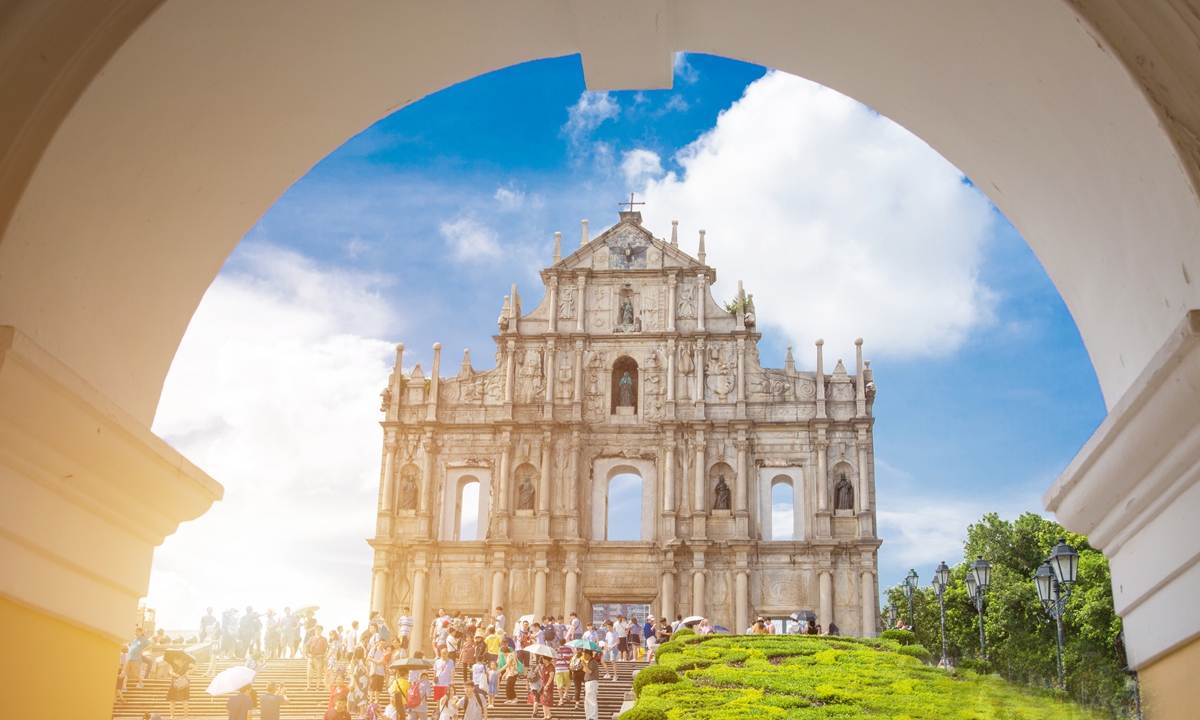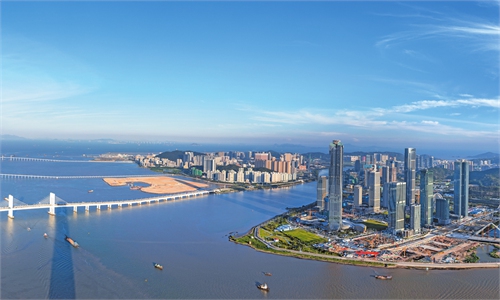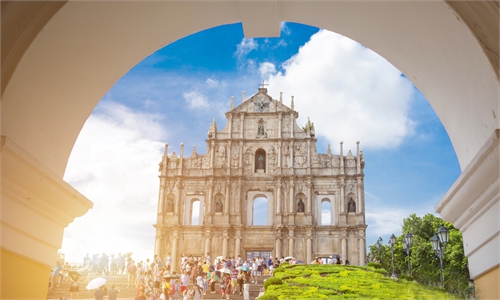
A view of the Ruins of St Paul Church in Macao Photo: VCG
Macao has seen its cumulative cross-border trips surpass 200 million this year as of Saturday, a new record and an increase of 9.4 percent compared to the total number of trips in 2023, according to statistics released by the Public Security Police Force of the Macao Special Administrative Region (SAR) on Sunday.
Macao residents accounted for over 72.261 million of these trips, making up 36.1 percent of the total. Inbound tourist numbers reached 32.545 million, a year-on-year increase of 25.7 percent from the same period in 2023.
The Portas do Cerco, or Border Gate Port, remained the busiest checkpoint, having handled 110 million trips or 52.7 percent of the total. The Qingmao Port, Hong Kong-Zhuhai-Macao Bridge Port, and Hengqin Port followed in terms of traffic volume.
Since the beginning of the year, the central government has implemented a series of policies to facilitate travel between the Chinese mainland and Macao and Hong Kong SARs, promoting economic and cultural exchanges between the two SARs and the mainland, and driving high-quality economic growth within the Guangdong-Hong Kong-Macao Greater Bay Area (GBA) region.
An official from the Hong Kong SAR announced on Sunday that weekly tourist arrivals in the city from the Chinese mainland reached 145,000 on Saturday, marking a 28.5 percent increase from the previous month's daily average, saying that the new multiple-entry visa policy brings fresh opportunities to Hong Kong, CCTV reported.
"This achievement is primarily a result of the ongoing strengthening of Macao and Hong Kong's tourist appeal," Liang Haiming, chairman of the Hong Kong-based China Silk Road iValley Research Institute, told the Global Times on Sunday.
The coordinated development within the GBA has provided strong support for regional development, with enhanced transportation and other conveniences driving the increase in passenger numbers. This underscores the vigorous recovery momentum in Macao's economy and tourism industry, Liang noted.
On December 2, the Hengqin line of the Light Rapid Transit (LRT) officially went into operation, connecting Macao with the mainland via rail transit. With trains running every six minutes, the line facilitates Macao's integration into the GBA's "one-hour living circle."
Furthermore, customs clearance procedures for travel to and from Macao have been continuously optimized. Since November 20, a "face scan instead of document scan" mode - allowing passengers to clear customs in seconds - has been trialed at the Gongbei Port, an immigration and customs checkpoint located in Zhuhai, South China's Guangdong Province.
"The overall living standards of Macao residents have continuously improved since the return to the motherland, and the economy has recovered rapidly from the pandemic," Lei Wai-nong, secretary for Economy and Finance of the Macao SAR government, recently said in a media interview, noting that the construction the Guangdong-Macao In-depth Cooperation Zone in Hengqin (Guangdong) has achieved tangible results, thanks to the country's support.
Lei noted that in the first three quarters of this year, Macao's overall economic scale recovered to 86.3 percent of the level in the same period in 2019, China News Service reported.
It is the first three quarters since 2019 that GDP once again exceeded 300 billion Macao patacas ($37.4 billion), said Lei.



